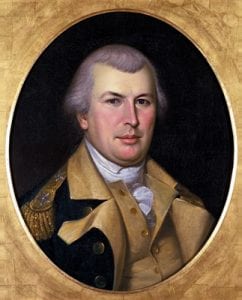Captain Molly Pitcher was born on October 13, 1754, near Trenton, New Jersey. During the American Revolutionary War’s Battle of Monmouth, she carried pitchers of water to soldiers, thereby earning her nickname. Honored in 1882 for her bravery, she died in Carlisle, Pennsylvania, on January 22, 1832.
Emily Geiger was a cool-headed 18 year old heroine who volunteered to be a messenger. Geiger’s father infirmities, he could not go to the battlefield, yet she defended her father’s beliefs. Geiger would be captured and confined to a room. While captured, Geiger tore the messages and ate them.
Deborah Samson, was a woman who disguised herself as a man in order to serve in the Continental Army throughout the American Revolutionary War. She was part of a small number of women with a documented record of military combat experience in that war. She served 17 months in the Army, as “Robert Shurtleff” and was wounded in 1782. Samson was honorably discharged at West Point, New York in 1783.
Sibyl Ludington was the daughter of Colonel Henry Ludington. On April 26,1977, at the young age of 16, Ludington rode forty miles through the night to warn militiamen under the control of her father that British troops were planning to attach Danbury, Connecticut, where the Continental Army had a supply depot. On her way to gather her Fathers troops she warned the people of Danbury. Ludington’s ride started at 9 p.m. and ended around dawn. She rode 40 miles into the damp hours of darkness. She rode through Carmel on to Mahopac, then to Kent Cliffs, from there to Farmers Mills and back home. She used a stick to prod her horse and knock on doors. She managed to defend herself against a highwayman with a long stick. When, soaked with rain and exhausted, she returned home, most of the 400 soldiers were ready to march.

